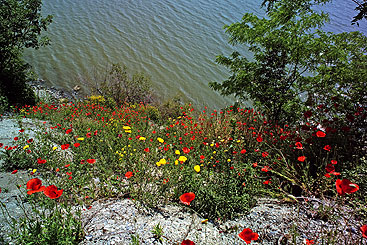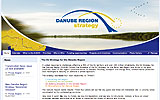Who finances the EU Strategy for the Danube Region?

Who finances the EU Strategy for the Danube Region?
Although the Strategy does not come with extra EU financing, a considerable amount of funding is already available to the region through various EU programmes. The most efficient use of these existing funds will require cooperation.

Financing the Danube Strategy will require a wider cooperation between stakeholders and a more efficient use of existing funding.
On 24 June 2011 the EU Strategy for the Danube Region was endorsed by the EU Council. It includes an action plan with concrete actions and projects and at the same time the well-known three NOs: no new funds, no new structures, no new legislation. This clearly means that existing funds and structures have to be used. But how is this possible?
No new structures does not mean there is no governance: under the EU Council, a high level group of Member States follows up on the progress of the action plan, while the actual implementation of the 11 priority areas of the Strategy is coordinated by institutions of the Danube Region countries. These are reporting to the European Commission, which in turn reports to the high level group.

Coordinating existing sources. No new funding does not mean there is no money: as a consequence of no funding, projects and actions of the 11 priority areas have to be financed by available financing sources. These are national and regional structural funds programmes (so called convergence, competitiveness and territorial cooperation), other EU programmes and initiatives, as well as national funds. International, public and private financing institutions complete the list of potential sources. It is indeed a very heterogeneous funding context for the Strategy, with several governance structures, financing mechanisms, criteria and timetables. To help coordinators and project promoters gaining an overview, the Strategy portal www.danuberegion.eu includes a comprehensive list of funding opportunities.
“The platform is already proving to be a useful tool for exchanging ideas and information,” says Adriana Kiss-Davies, desk officer at EU Commission, DG Regional Policy.
Nonetheless, a one-stop shop for financing Strategy projects does not exist and is not planned. Even though this would make projects promoters’ lives easier, it is simply not feasible: can you imagine one institution being responsible for assessing and financing projects in all themes for all Danube Region countries? How could it possibly cover health care, competiveness, biodiversity, SMEs, organised crime prevention and so on. all at the same time? It would go far beyond the European Union competences and certainly be against the ambition to bring public and private funding together.
“The strategy is of course much wider than cooperation programmes, in terms of objectives, scope and geographical coverage,” says David Sweet, policy adviser to the Director-General, EU Commission, DG Regional Policy.
A new form of cooperation. Only an open governance structure, such as the one of the Strategy, can possibly aspire to align actions of all national, regional and local stakeholders across the Danube Region, towards the same identified priorities.
“More generally, the macro-regional strategies of the Baltic Sea and the Danube Region are new and innovative approaches for regional policy,” says Dirk Ahner, Director General, DG Regional Policy, European Commission. “Looking to the future, they could serve as good examples of how to address challenges and opportunities in an integrated, crosscutting way, focusing on strategic priorities for a specific region and making best use of a series of different policies and resources.”
Bringing programming in line with the Strategy. Current structural funds and sectoral programmes (2007–2013 programming) have not been developed according to the Strategy, but they are already financing many projects in line with the Strategy, like other financing institutions. At the same time, a stronger role for macro-regional strategies has been foreseen for the up-coming programming (2014–2020).
“The approval of the Strategy at the end of the current programming period is a ‘challenge’, since most of the available amounts are already committed,” says Petra Szavics, Ministry of Environment and Forests of Romania, and Mr Peter Bakonyi, VITUKI Non-profit Ltd, Hungary, priority area coordinators. “At the same time, if we look at it from the perspective of the next programming period, the Strategy comes as an ‘opportunity’, just in time, to be addressed in programme planning.”
Sharing expertise. Of course, there is certainly a clear need to explore effective mechanisms and processes to align the heterogeneous funding of the current programming period. To do this, expertise on funds in a multi-national context is needed. This is why, INTERACT has been involved: we have this expertise, the overview of territorial cooperation and networks management is our daily business. Since March 2011, our work is supported by a think tank of Danube Region financing institutions and priority area coordinators, called Labgroup. We are convinced that its work is contributing to filling in the gap between decisionmaking on projects by priority area coordinators, on the one side, and financing decisions by funding bodies, on the other.
These are some interesting key points made at the Labgroup:
1. The Strategy is not about additional funding, it is about more cooperation: it makes enhanced cooperation possible, among institutional and noninstitutional stakeholders at national, regional and local level, across the whole Danube Region.
2. The Strategy still relies on existing funding opportunities: rules, criteria, procedures and decisionmaking for financing do not change because of the Strategy.
3. The Strategy means strengthened and new networks: priority area coordinators, the projects and actions they promote, make existing networks stronger or build up new networks.
4. The Strategy means more visibility for concrete project achievements: for its success, the Strategy needs concrete projects results, to be made visible to the Danube Region citizens and decision-makers.
5. The Strategy is about more efficient use of funding: different ways can be found to align several funding sources: a project can be financed by several funding sources along a consecutive time line, for example. Or an action can be composed by different projects running in parallel, all contributing to a common goal. Or even new financing instruments, governed by one cooperation structure, but financed by several funds, can be created. There are already good examples considered by the Labgroup and the priority area coordinators.
The Strategy is an opportunity for the Danube Region to grow faster together. To make it happen, we have first to believe in it.





